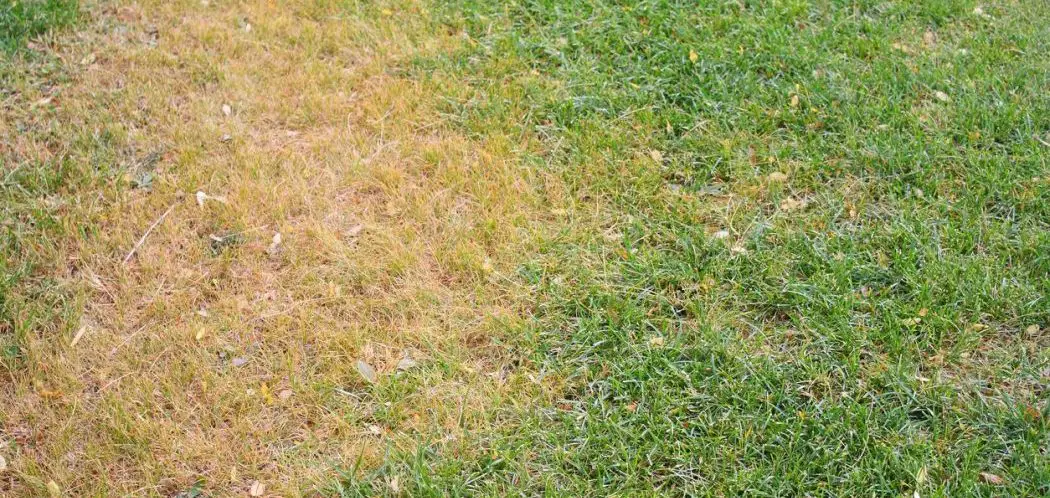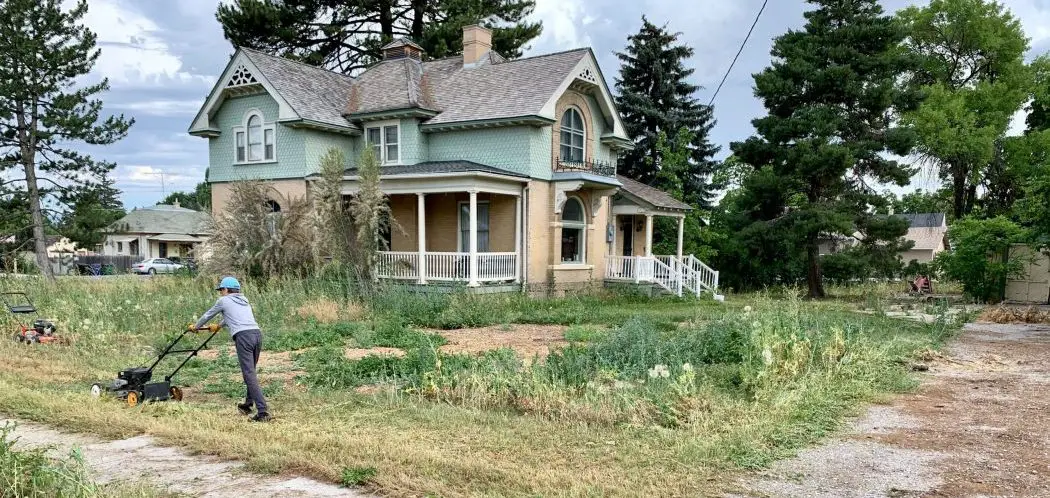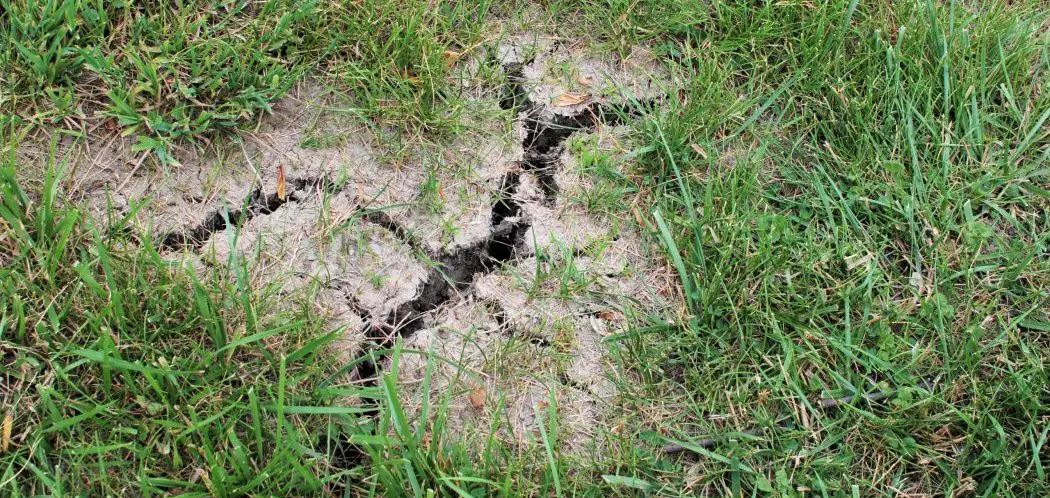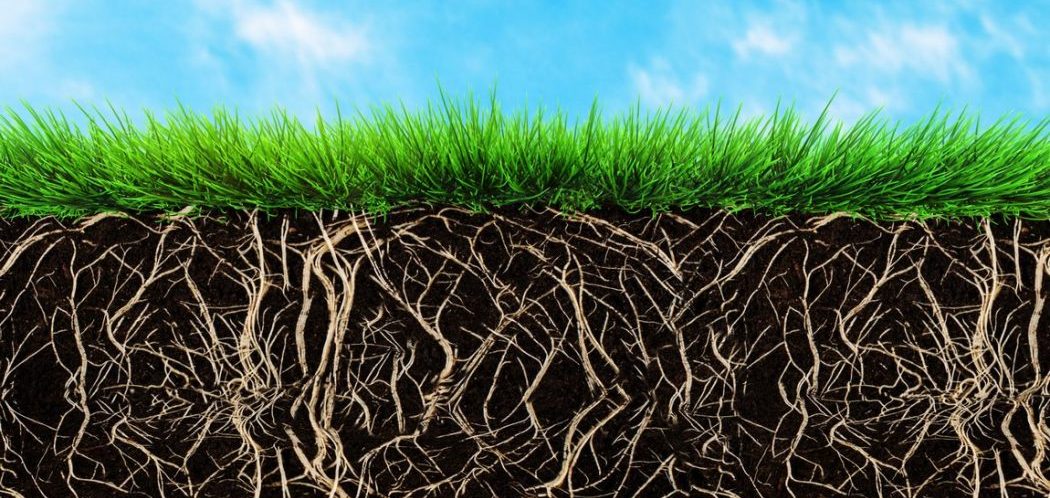Heat stress is something that’s very common to see in lawns every year. When temperatures are up, it’s really common for lawns to suffer.
You’re probably wondering what a lawn under heat stress looks like and how you can shield your lawn from the heat.
In this article, I’ll show you how to properly diagnose a lawn that’s struggling with the heat and what you should do about it.
Heat stress vs drought stress
It’s important to recognize that heat stress and drought stress are two different things although they do often occur at the same time.
Drought stress occurs when your lawn is not getting enough water. It can cause your grass to go into dormancy if you don’t intervene.
Heat stress is caused as a result of high temperatures. Most cool seasons grass types won’t begin to struggle until temperatures reach 85F although some types may begin to show symptoms at slightly lower temperatures.
High temperatures at night time can also contribute to heat stress too! Just because its cooler when the sun goes down does not mean that the temperature gets low enough to provide some relief.
Note that heat stress doesn’t come on instantly. It can take several days of higher temperatures before your lawn can start to show symptoms.
Signs your lawn is suffering from heat stress
Some of the key signs include…
- The blades begin to wilt
- Color loss
- Ghost foot – A noticeable footprint is left behind when you walk across the grass
- Your grass could turn blue/gray
- Grass blades turn dry
Look for scattered areas of light brown grass
Heat stress often shows itself through scattered areas of light brown grass because soil doesn’t hold water evenly.
Heat stress or a pest/disease problem?
It’s common to see brown patches in a lawn, but knowing the cause of the problem isn’t always easy.
It’s common for people to worry about having a pest or disease problem while heat stress is one of those things that people tend to forget about.
Heat stress is actually more common than a lot of people might think.
If you suspect that your lawn is suffering from some kind of disease, look a little closer towards the roots. The blades will be brown and wet towards the bottom of the blades if the grass is suffering from a disease.
If you have an insect problem, you should be able to pull up the grass fairly easily. The insects eat the roots of the grass which make them weak.
Grass surrounded by concrete is more likely to suffer from heat stress
If you have an area of grass that has concrete on either side, it’s going to be more prone to heat stress. The concrete absorbs sunlight which warms it up. It’s able to hold on to this heat for quite a while which can cause the surrounding area to warm up through heat radiation.
Check your soil temperature
You can check your soil temperature pretty easily too. This AcuRite 00661 Stainless Steel Soil Thermometer (link to Amazon) does the job just fine.
Localized temperatures can vary quite a bit so its definitely best to take your own temperature recording. You’ll want to measure at about an inch and a half or so down into the ground.
Check your irrigation
When it comes to heat stress, one of the first things you need to do is make sure your irrigation routine is one point. If you have signs of heat stress, make sure your sprinklers are covering those areas.
Make sure you’re watering deep and infrequently
Hold off watering everyday if you can. When you water too frequently, you can develop a shallow root system.
Deep and infrequent watering encourages a deeper root system which will make your lawn much better able to cope with higher temperatures.
Make sure you water early in the morning too!
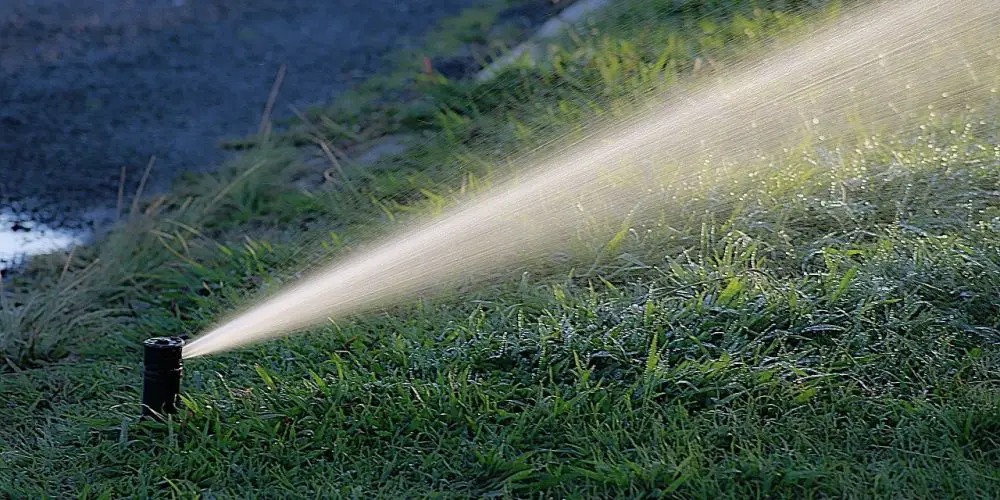
Tuna can test
The tuna can test can be used to see exactly how much water your lawn is getting from your irrigation system.
It’s a pretty simple test. You basically take several tuna cans and spread them out on your lawn. Next, you set off your sprinkler system and see how long it takes for a half inch to fill up.
This test allows you to set your sprinkler system to an appropriate run time.
You can also test out those areas that you think are struggling from heat stress.
How much should you water?
The general recommendation is to water a half inch every time.
The half inch recommendation assumes your lawn is getting a little help from ocassional rain showers. It also assumes that your lawn is getting some cloud cover to help shield it from direct sunlight.
If you’re not getting any rain at all, you may need to up your watering frequency by adding in an additional day.
Syringing
Syringing is where you lightly water the lawn at peak stress time in the middle of the day. The aim of this is to provide a cooling effect to your grass and soil when temperatures are high.
If you have some spare time during your lunch hour, getting out there and spraying some water can actually help cool down your soil and the grass blades to give them a bit of a break from the heat of the day.
The idea here is not to water deep. You should only be watering very lightly.
Hand watering the areas suffering from heat stress is one option. This might be a good idea if the area you live in an area that has certain regulations on how much water you can use.
I’d recommend using a nozzle that will you give you a misty spray. These tend to have a greater cooling effect. I’d recommend this Gilmour nozzle (link to Amazon). It has thumb control so you can adjust water flow with one touch. It works great with the Gilmour Ply Flexogen Hose.

For the rest of your lawn…
If you don’t have water restrictions, you can go ahead and run your sprinkler system in the middle of the day for a few minutes.
I use this Gilmour Impulse Sprinkler. It can create small droplets which works great for cooling.
And no… watering in the middle of the day will not burn the lawn.
You might often hear that watering in the heat of the day will burn your grass but that’s actually a myth.
Alleviate Compacted Soil
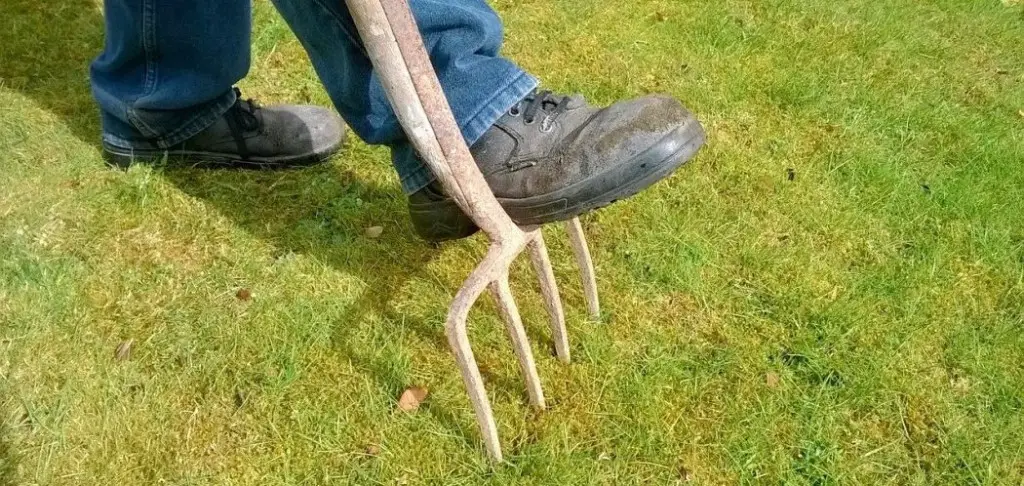
Compacted soil is something else that can lead to heat stress, especially if you live in an area where the clay is hard.
There are several different ways in which you can alleviate compaction.
I’d recommend aerating each year. This is not something you need to do any more regularly than that. After you aerate, the soil will gradually begin to open up to allow more air, water and nutrients to get down into the soil. This work great against heat stress.
You could always apply some humic acid too.
Hydretain
I’ve found hydretain to be pretty useful in helping a lawn stay green in summer. This product (link to Amazon) can be used on lawns, shrubs, flower beds to help fight drought and reduce the need for watering.
If used correctly, hydretain pulls water out of the air, draws it down into the root zone and then turns it into water that can be used by the plant.
This reduces the amount of water you need to put down.
If you’re going to use hydretain, it’s really important that you follow the instructions as closely as you can to get the best results.
Things to avoid…
When your lawn is in a stressed state, there are things that you’ll want to avoid.
The last thing you want to do is make your problem worse.
Keep foot traffic to a minimum
If your lawn is under heat stress, it’s in a delicate state. The crown (base) of the plant can easily get damaged so stay off the grass as much as possible.
Avoid frequent mowing
You might have heard that you should mow your lawn 2-3 times to stimulate growth and that’s usually good advice.
If your lawn is suffering in the summer, I’d highly recommend dialling back your mowing frequency to once per week. This will help to reduce stress and decrease foot traffic.
Avoid Fertilizing
If your lawn is struggling, the last thing you want to do is push growth.
In Summary
Keep in mind that heat stress is very prevalent in lawns, especially when temperatures rise into the triple digits.
Remember that your grass is resilient so once the temperatures begin to dip, it will typically return to its normal state if you avoid doing things that will cause further damage.
Make sure you’re watering appropriately. Don’t be afraid to give those struggling areas a little extra water if needed. You might want to hand water these areas to make sure you’re cooling down the temperature of the soil and the grass blades.

